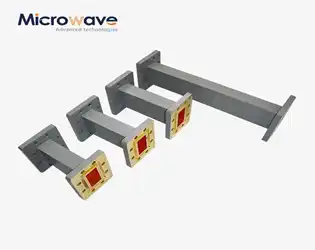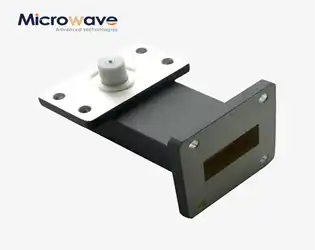BLOG

How Does a Double-Ridged Waveguide Magic Tee Improve Microwave Performance?
July 24, 2025
In the realm of microwave technology, the Double-Ridged Waveguide Magic Tee stands as a cornerstone component that significantly enhances signal processing capabilities across various high-frequency applications. This sophisticated device revolutionizes microwave performance by providing exceptional power distribution and synthesis capabilities, enabling engineers to achieve optimal signal splitting and combining with minimal loss. The Double-Ridged Waveguide Magic Tee offers superior isolation between ports, preventing signal interference and ensuring stable, reliable performance in demanding environments. By incorporating dual-ridge structures within the waveguide design, this technology delivers broadband operation from 2 GHz to 110 GHz, making it indispensable for satellite communications, radar systems, aerospace applications, and defense technologies where precision and reliability are paramount.
Top 7 Uses for Double Ridged Waveguide Calibration Kits in RF Labs
July 24, 2025
In the rapidly evolving world of RF technology, precision measurement and calibration form the backbone of reliable communication systems. Double Ridged Waveguide Calibration Kits have emerged as indispensable tools in modern RF laboratories, offering unparalleled accuracy and versatility across diverse applications. These sophisticated calibration solutions enable engineers to maintain signal integrity, minimize measurement uncertainties, and ensure optimal system performance across a wide frequency spectrum. From telecommunications infrastructure to aerospace applications, Double Ridged Waveguide Calibration Kits play a crucial role in validating and optimizing complex RF systems, making them essential components in today's technology-driven landscape.
Engineered Efficiency: Rectangular Straight Waveguide for Reliable RF Links
July 24, 2025
In the rapidly evolving landscape of microwave technology, Rectangular Straight Waveguides stand as fundamental components that enable reliable radio frequency communication across diverse applications. These precision-engineered transmission lines represent decades of microwave engineering excellence, delivering unparalleled performance in satellite communications, radar systems, and aerospace applications. The rectangular cross-section design optimizes electromagnetic wave propagation while minimizing signal loss, making them indispensable for high-frequency applications requiring consistent signal integrity over extended distances.
Why Engineers Are Switching to Inflatable Straight Waveguides in 2025?
July 24, 2025
The microwave engineering landscape is witnessing a revolutionary shift as engineers increasingly adopt inflatable straight waveguides for their cutting-edge applications. This transformation represents more than just a technological upgrade—it's a paradigm shift toward more efficient, flexible, and cost-effective signal transmission solutions. As we advance deeper into 2025, the demand for lightweight, adaptable, and high-performance waveguide systems has reached a critical point, driven by the expansion of satellite communication networks, the proliferation of 5G infrastructure, and the growing complexity of aerospace systems. The drastic modifications in waveguide technology due to technological innovations have positioned the Inflatable Straight Waveguide as a game-changing solution that addresses the fundamental limitations of traditional rigid waveguides while delivering superior performance characteristics across multiple frequency bands.
How to Maximize Frequency Range Using Double Ridge Twist Waveguide?
July 24, 2025
In the rapidly evolving landscape of microwave technology, achieving maximum frequency range while maintaining signal integrity presents a fundamental challenge for engineers and system designers. The Double Ridge Twist Waveguide emerges as a sophisticated solution that addresses this critical need through innovative design principles and advanced manufacturing techniques. This high-performance microwave component combines the benefits of double ridge geometry with precision twist mechanisms, enabling efficient signal transmission across an unprecedented frequency spectrum from 5 GHz to 110 GHz. By understanding the underlying principles and optimization strategies, engineers can harness the full potential of Double Ridge Twist Waveguide technology to meet the demanding requirements of modern satellite communications, defense systems, and advanced telecommunications infrastructure.
Stop Impedance Mismatch: 50Ω Coaxial Power Divider for Multi-Antenna Arrays
July 24, 2025
In modern multi-antenna array systems, impedance matching stands as a critical factor determining overall system performance and signal integrity. A Coaxial Power Divider specifically designed for 50Ω impedance matching serves as the cornerstone solution for eliminating impedance mismatches that plague contemporary communication systems. These precision-engineered components ensure optimal power distribution across multiple antenna elements while maintaining the standardized 50Ω impedance throughout the signal path. Advanced Microwave Technologies Co., Ltd has developed sophisticated coaxial power dividers that address the growing demand for reliable, high-performance signal distribution in complex multi-antenna configurations, making them indispensable for satellite communications, radar systems, and modern wireless infrastructure applications.
July 23, 2025
In the sophisticated world of satellite communications, achieving optimal transmission efficiency is paramount for reliable global connectivity. The Right Angle Double Ridged WG To Coaxial Adapter emerges as a critical component that significantly enhances signal transmission performance in satellite ground stations. This specialized adapter facilitates seamless transitions between waveguide and coaxial systems, minimizing signal loss while maximizing power transfer efficiency. By incorporating advanced engineering principles and precision manufacturing techniques, these adapters address the unique challenges faced by satellite communication systems, including space constraints, frequency requirements, and environmental durability demands. Understanding how these components boost transmission efficiency is essential for engineers and system designers working to optimize satellite ground station performance.
July 23, 2025
In the rapidly evolving world of microwave technology, the seamless integration of different transmission line technologies is crucial for optimal system performance. At the heart of this integration lies the Right Angle Waveguide to Microstrip Adapter, a sophisticated component that bridges the gap between waveguide and microstrip transmission systems. This adapter represents a critical solution for engineers seeking to maintain signal integrity while transitioning between different transmission mediums at high frequencies. The Right Angle Waveguide to Microstrip Adapter fundamentally improves signal efficiency through its precision-engineered design that minimizes impedance mismatches and reduces reflection losses at the transition point. By maintaining consistent characteristic impedance across the transition, this adapter ensures that electromagnetic energy transfers smoothly from the waveguide structure to the microstrip line without significant power loss or signal degradation. The right-angle configuration not only saves valuable space in compact systems but also provides mechanical advantages in system assembly while preserving the electrical performance characteristics essential for high-frequency applications.




